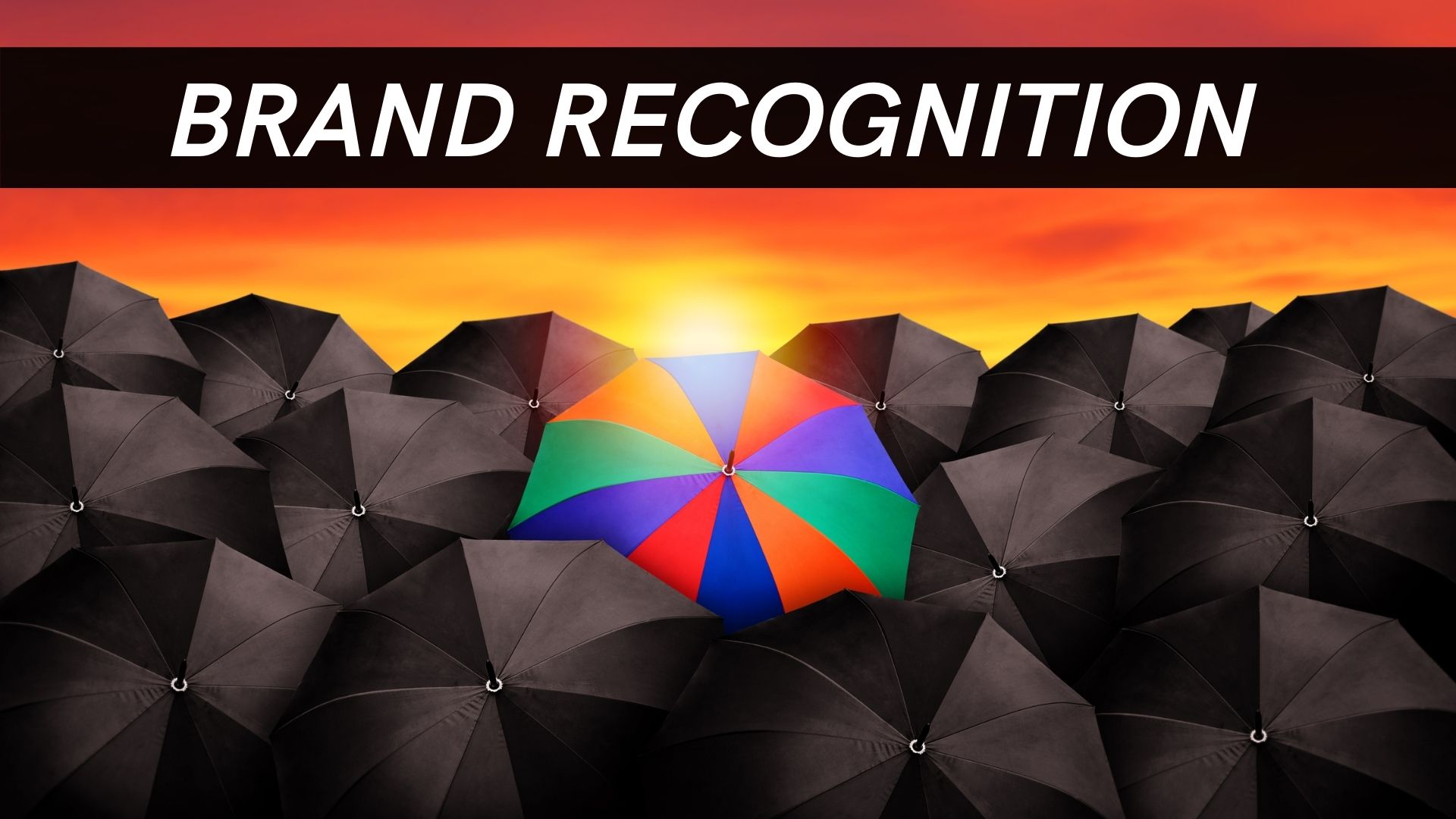Brand recognition is the ability of a brand to get recognized by its target audience or potential users/buyers through its key attributes or characteristics over a competitor. When people recognize a brand or company via its different visual or auditory cues like colors, logos, jingles, packaging, blog posts, etc instead of directly seeing the brand name then it is the recognition.
Be it an established brand or a small business, they all conduct market research to find out their USP for ensuring the success of the marketing and advertising strategies. When you build brand recognition, your company’s marketing department would come up with specific cues that can further be marketed to the existing as well as new audiences.
What is Brand Recognition?
Brand recognition is a marketing concept used to describe customers’ ability to identify a brand through visual cues or other attributes.
For example- a swoosh logo is immediately going to make people think of Nike, and the purple color is unique to Cadbury.
Thus, brand recognition can be triggered by a brand name, logo, tagline, jingle, color schemes, packaging, or other features. Brand recognition is highly sought after as it aids in making brands popular and giving brands a competitive advantage over other similar competitors.
Brand recognition is also known as aided brand recall, which is customers’ ability to recall a brand when thinking about a specific type of product or service. So, when people measure t
Brand Recognition Vs Brand Awareness
Brand recognition is associated with different sorts of visual and audio cues through which people or target audiences can recognize a brand, while on the other hand, brand awareness is related to the knowledge that people or target audiences have about the existence of a brand.
Strategies for Building Brand Recognition
- Launching a PR campaign
- Trying to write guest blog posts
- Optimizing your site
- Targeting social influencers
- Focussing on content
Strategies for Building Brand Awareness
- Providing education
- Offering entertainment
- Delivering unforgettable experience
- Using referral programs
- Using infographics
- Social focus
Need for Brand Recognition

Brands often invest plenty of resources and time to ensure high brand recognition. A lot of money is spent to create mighty yet unique jingles or logos that the brand can use uniformly across all platforms to evoke brand recognition. There are three reasons why it is essential for any business today:
1. Increased familiarity and trust
Brand recognition shows how familiar an audience is with your brand. This, in turn, makes your brand easy to recall and seem reliable in any situation, any place, any time. Therefore, familiarity helps in building trust and emotional bonds between a brand and its customers.
2. Increased profit margins
Strong brand recognition affects sales as well. As people easily trust such brands, brand recognition also raises brand equity. The price sensitivity of customers reduces as such a brand seems superior in comparison to other competitors. That is why brands like Apple thrive even after having competitors with more affordable products because their strong brand recognition has helped increase their profit margins without adverse effects.
3. Increased preference
Brand recognition indeed adds a competitive advantage to a brand. As it helps form deeper personal and emotional connections with a brand, consumer preferences are influenced as well. Regardless of the brand values, quality or pricing, brand recognition makes consumers prefer that particular brand over its competitors as they recognize it and trust it. Hence, this emotional benefit is a powerful tool for brand success.
How To Improve your Brand Recognition?

The goal of brand recognition is to breed familiarity and quick recall of a brand in their target audience’s minds. Even though it is an intangible asset dependent on cognitive networks, there are five surefire ways to help create profitable brand recognition for your business:
1. Use your brand story to your advantage
Most brands benefit from using their brand story to drive brand recognition. Everyone loves a good story, and it can be instrumental in forming a trusting relationship with your brand. It allows you to humanize your brand as well.
Transparency and trust can increase likability, which in turn makes your brand more recognizable than others.
2. Exceed expectations for your brand
It’s time to raise the bar with the quality of products or services that you provide. Going beyond the call of duty, providing superior quality or pricing, etc., can help exceed customers’ expectations.
This makes your brand the “go-to” brand for that particular need of customers, making your brand more easily recognized. Word-of-mouth can also help spread the word and increase your customer base.
3. Provide an enriching customer experience
Most brands do not place importance on the customer’s experience after a sale has been made, but this can drive brand recognition to a higher level. Providing a unique and memorable customer experience before and after a sale can increase customer loyalty and brand recognition.
4. Put your brand’s face on every cover
It’s essential to keep your brand’s logo, tagline, jingle, or other cues on everything that a brand does. This includes commercials, billboard ads, product packaging, etc. A consistent, unique design also makes people instantly choose your brand from plenty of other choices since they are more familiar with your brand.
Whichever cue is used to increase brand recognition should be placed strategically and consistently on all activities of the business to result in quick brand recall and larger market share.
5. Increase engagement to stay at the top
A single purchase is not enough to trigger brand recognition. That is why brands should employ efforts to constantly engage with their audience and make a space for their brand in the minds of people. This can be done by staying in touch with customers through email chains, social media posts, quizzes, offers, blog content, etc.
This makes customers feel valued in your brand’s growth. It is crucial to make such engagements exciting and informative so that customers feel like they’re getting benefited from staying in touch with your brand. Moreover, brand recognition is gained without making consumers feel bombarded with your brand’s promotions.
Conclusion
On the concluding note, it is clear that brand recognition is the extent to which a target audience can accurately recognize a brand, product, or service. We hope you would have understood the best ways of optimizing it.
What are your thoughts about its importance for a business or brand? How would you differentiate it from brand awareness?
Pinky is an MBA in Marketing from the University of Mumbai. She loves helping people out in learning Marketing and sharing latest ideas and tactics for growing businesses.
